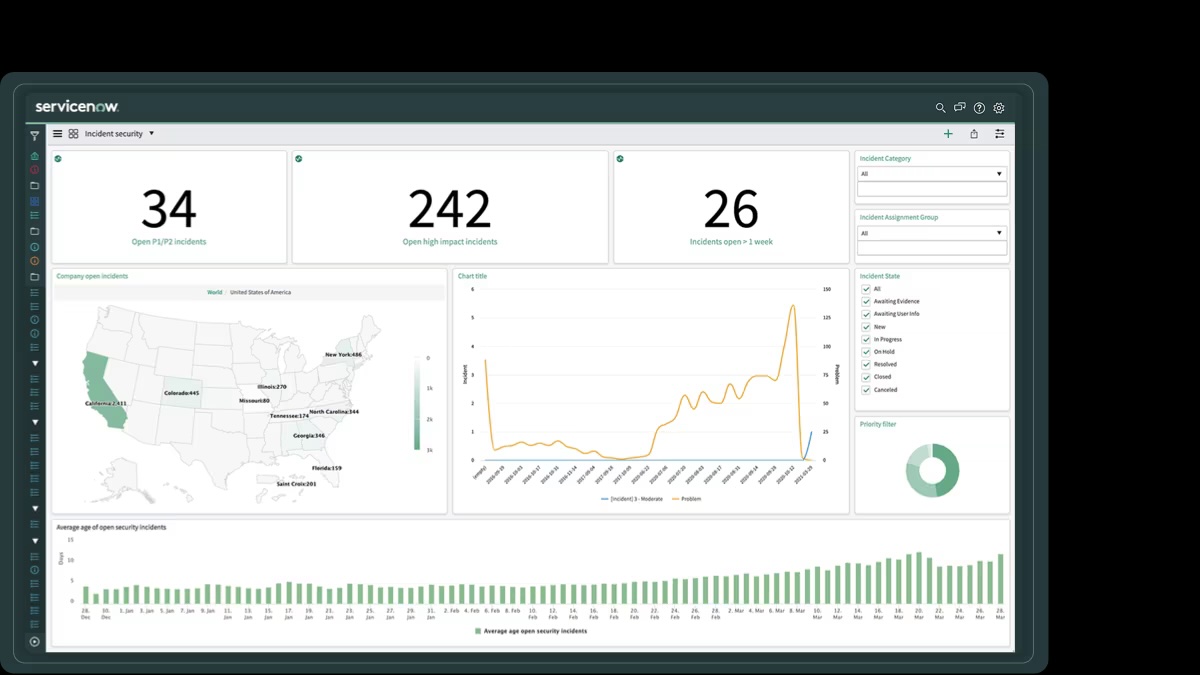ServiceNow CSAT and what it means
How do you choose the right ServiceNow partner? How do you ensure quality and know-how for your ServiceNow projects? The answer is to pay attention...
Nenad Smoljanec • 3 min read • Sep 9, 2024

ServiceNow’s AI-driven technology redefines what's possible, from streamlining customer interactions to boosting agent productivity. Discover insider tips and best practices for leveraging ServiceNow's cutting-edge AI features.
Artificial intelligence (AI) has been a core part of the ServiceNow platform for several years now, with capabilities like virtual agents, agent assist, and AI-powered search. Over the past seven years, ServiceNow has steadily expanded its AI and machine learning offerings, adding features like AIOps, robotic process automation, and skills mapping.
However, ServiceNow's big AI story in recent times has been the introduction of generative AI (“GenAI”), which is implemented under the product name Now Assist.
Launched in 2023, GenAI has brought a new level of AI-powered capabilities to the platform, empowering both customers and agents alike.
At the heart of ServiceNow's GenAI strategy is the "Now LLM" – a domain-specific large language model developed by ServiceNow in collaboration with nVidia and Hugging Face. In addition to their own proprietary model, ServiceNow also allows customers to integrate other popular GenAI models like OpenAI, Microsoft Azure AI and exploring Google Cloud. This flexibility in GenAI providers gives ServiceNow customers the ability to choose the models that best fit their specific needs and use cases.
For customer service and support teams, GenAI is proving to be a game-changer. Before the introduction of GenAI, the customer service journey could be cumbersome, with customers having to search and navigate knowledge articles and content (not necessarily in their native language), interact with chatbots, and then finally engage a live agent. This agent would then have to sift through chat and case histories to get up to speed.
With GenAI, this entire process has been streamlined. Customers can now get intelligent summarized search results and content presented in their preferred language generated by GenAI dynamic translation, and when they do need to chat with an agent (they do so in their native language), that agent has access to AI-generated chat and case summaries, and ability to generate resolution notes or knowledge articles that are dynamically translated between the parties – saving time and improving the overall customer experience.
"For customer service and support teams, GenAI is proving to be a game-changer."
GenAI is also empowering agents themselves, further improving agent productivity and customer satisfaction, by providing agents with tools like automated knowledge article generation and post-call (voice conversation) summarization.
The benefits of GenAI extend beyond just customer service. ServiceNow's GenAI capabilities can also be leveraged by administrators, developers, and other platform users to boost productivity and efficiency.
Administrators, for example, can use GenAI-powered code generation and workflow recommendations to streamline the creation of new applications and automation. Developers can leverage GenAI to accelerate their coding efforts with features like text-to-code and text-to-workflow capabilities, as well as playbook and service catalog item generation.
Of course, as with any emerging technology, there are some important considerations to keep in mind when implementing GenAI on the ServiceNow platform. A major drawback for many enterprises is the lack of language support. At the time of writing, Now Assist only speaks English. Next in line is French, German, Dutch and Japanese. In the roadmap, support for Nordic languages is set for 2025.
There are also infrastructure and data security implications to consider, as some of the GenAI processing happens in external cloud environments like Microsoft Azure. Customers need to be aware of data privacy and opt-out policies, as well as the fact that GenAI is not available for on-premises ServiceNow installations.
While GenAI can provide a wealth of valuable content and insights, it's important to remember that the technology is still evolving. Users will need to carefully validate the outputs, especially in areas like code, playbook, catalog item generation and workflow recommendations, to ensure accuracy and alignment with their specific needs.
Obtaining access to ServiceNow's GenAI capabilities requires specific licensing, with the "Pro Plus" and "Enterprise Plus" packages providing the necessary entitlements. Unlike other ServiceNow licenses, the GenAI usage is measured in "assists" across both production and non-production environments.
ServiceNow has promised continued enhancements to its GenAI offerings, with plans to improve virtual agent capabilities and further boost developer productivity. Multilingual support is also a key focus area as ServiceNow works to make its GenAI tools accessible to a global customer base. Last but not least, with a vision to “blur physical and digital world boundaries”, e.g. convert uploaded objects such as pictures or documents automatically into ServiceNow objects, like whiteboard drawings and pictures into a new process, playbook or a flow in ServiceNow.
As AI and generative AI technologies continue to evolve, ServiceNow's commitment to integrating these capabilities into its platform positions the company as a leader in the enterprise software space. By empowering customers, agents, and developers alike, ServiceNow's GenAI offerings have the potential to transform the way organizations leverage their ServiceNow investments.

How do you choose the right ServiceNow partner? How do you ensure quality and know-how for your ServiceNow projects? The answer is to pay attention...

The Catalog Builder is a powerful tool within the ServiceNow platform that allows users to create and manage service catalogs. A service catalog is a...

Tired of having to go through tons of records to find the information you need? Asking colleagues about the workload of different teams? Exporting...